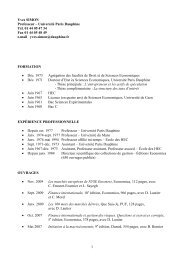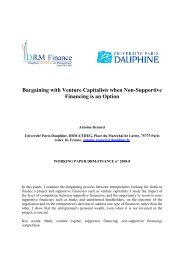Corporate governance and earnings management ... - CEREG
Corporate governance and earnings management ... - CEREG
Corporate governance and earnings management ... - CEREG
Create successful ePaper yourself
Turn your PDF publications into a flip-book with our unique Google optimized e-Paper software.
2.4. The capital markets <strong>and</strong> professional shareholders<br />
The patent conflict between creditors (represented by lawyers <strong>and</strong> bankers) <strong>and</strong><br />
shareholders is a classic of the accounting literature. As soon as 1882 in the well known<br />
Flitcroft’s case, Lord Jessel stresses the diverging interests of these categories of actors<br />
(Edwards, 1989, p. 178). But more interestingly for us this conflict is basically not between<br />
creditors <strong>and</strong> all shareholders but between creditors <strong>and</strong> professional shareholders.<br />
Professional shareholders or “rentiers investors” (to use an expression of Hannah, 1983, p.<br />
57), at the difference of family-owners shareholders, are generally short-term oriented <strong>and</strong><br />
expect immediate <strong>and</strong> maximum profits. This kind of distinction is also a classical one in the<br />
accounting literature. A great number of accounting historians has shown how very often the<br />
interests of creditors <strong>and</strong> family-owners for a conservative accounting are common (see<br />
notably Edwards, 1989; Lemarch<strong>and</strong>, 1993, p. 529-581). This is the reason why we are not<br />
examining here specifically the role of family-owners which is supposed to be fundamentally<br />
to play in the same direction as the creditors. So for us the major conflict is between the<br />
creditors - possibly helped by the family owners - <strong>and</strong> the professional shareholders.<br />
Normally speaking the disappearance of the old conservative attitude towards goodwill should<br />
be connected with a rise of the influence of professional shareholders.<br />
The total separation between owners <strong>and</strong> managers tends to work in favor of a nonamortization<br />
approach. More prosaically, it could be said that shareholders will not st<strong>and</strong> for<br />
immediate or rapid charging of goodwill against income. Already at the end of the 19 th<br />
century, a good many authors, including supporters of immediate expensing/amortization,<br />
were aware that shareholders could find themselves deprived of dividends due to drastic<br />
amortization of goodwill. Explicit allusions to this problem are found in the writings of<br />
Matheson (1884), More (1891, p. 287), Guthrie (1898, p. 429), <strong>and</strong> Linnett (in Guthrie, 1898,<br />
p. 430). Guthrie is particularly eloquent on the subject: after demonstrating that in principle<br />
goodwill should be amortized over its estimated life, he stresses that in practice this method<br />
13



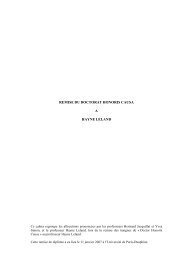

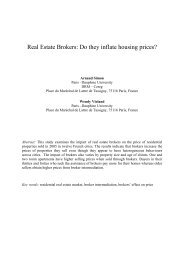
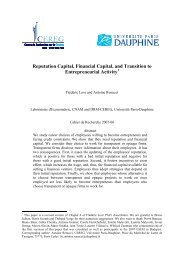

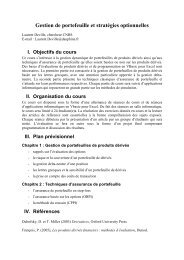



![& 6 ] ^ F ]^ - CEREG - Université Paris-Dauphine](https://img.yumpu.com/33326502/1/184x260/-6-f-cereg-universitac-paris-dauphine.jpg?quality=85)

